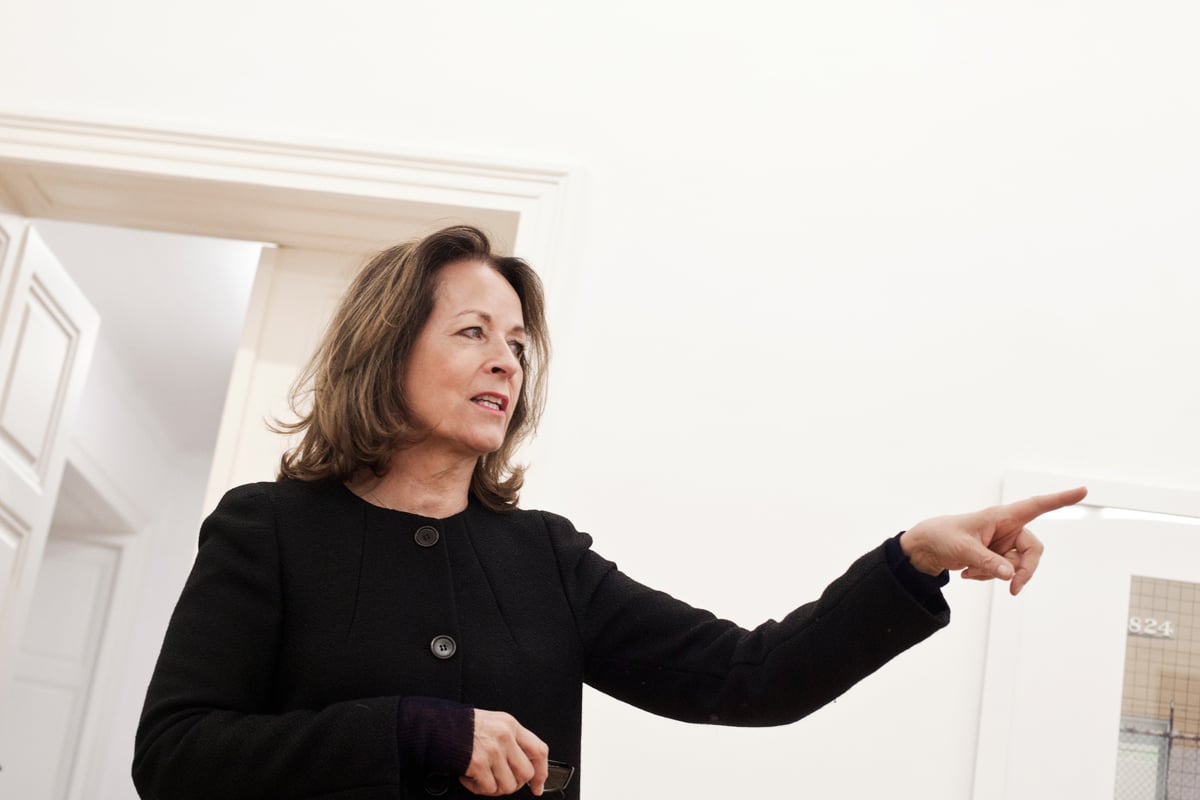
Vienna has been commanding increasing attention on the European art circuit in recent years spurred on by dynamic institutions, government investment in the arts, and a strong contingent of innovative and intellectually-engaged galleries. Principle among those is Rosemarie Schwarzwälder’s Galerie nächst St. Stephan.
In recognition, the federal association of German galleries and art dealers (BVDG) and the Koelnmesse have named Schwarzwälder 2014 recipient of the €10,000 Art Cologne Prize, following previous winners such as Michael Werner (2011), Ingvild Goetz (2001), Nicholas Serota (2004), Harald Falckenberg (2009), and Harald Szeemann (1989). artnet News caught up with Schwarzwälder ahead of the fair for a little lesson in the gallery’s history.
What set you on your way to own a gallery?
I began working in a well-known gallery in 1978, which was run by by Oswald Oberhuber as an [artist] association at the time. By 1984, I had already begun to set the course for the direction I wanted [the gallery] to go in, which I later described in my book Klares Programm (Distinct Program). And it became more and more imperative for me to either leave the gallery or to privatize it, which is what happened in 1987.
What’s the nearest you’ve ever come to giving it all up?
I’ve never wanted to give it up.
Now one of Austria’s most prominent galleries, Nächst St. Stephan didn’t start out as a power-seller. Could you tell me about those early days?
Up until the 1970s, there were hardly any collectors in Vienna. This was because Jewish culture and the art elite disappeared when Vienna’s Jewish citizens were killed or had to flee the city because of the Second World War. In the 1920s, there used to be a gallery in the space where Galerie nächst St. Stephan is located today. Its first owner was Otto Kallir-Nirenstein. He had to leave for Paris in 1938, and he later immigrated to New York.
After the gallery closed, Otto Mauer—who was the priest of St. Stephen’s Cathedral—reopened the gallery in 1954 and named it Galerie St. Stephan. In 1963, the archdiocese of Vienna asked him to rename the gallery Galerie nächst St. Stephan (which means “next to St. Stephen’s Cathedral”). They wanted to distance themselves from the gallery, because his exhibitions had become a too radical for the church. When I took over the gallery in 1987, I changed the name to Galerie nächst St. Stephan Rosemarie Schwarzwälder.
What’s the central thread running through your program?
Abstract and conceptual art are the main categories. This means we focus not only on painting but also on photography, installation, and sculpture. I value the long-term partnerships with my artists, which include Ernst Caramelle, Helmut Federle, Imi Knoebel, Günter Umberg, Adrian Schiess, Heinrich Dunst, and later Bernard Frize, Katharina Grosse, Karin Sander, and Herbert Brandl. I still also try to constantly bring something new. I’ll choose younger artists if their work appeals to me through its intellectuality, sensibility, and aesthetic stringency. Michal Budny, Christoph Weber, and Sonia Leimer have been a part of our gallery for the last few years. I am currently also showing Daniel Knorr, a Romanian artist based in Berlin. Luisa Kasalicky will also have a solo exhibition in my gallery this summer.
How long have you been coming to Art Cologne, and are there any particular memories or editions that stick out?
The first time I participated was in 1981, when the art fair was still called Internationaler Kunstmarkt Köln.The Rhineland is where I learned how galleries work in the first place – how you professionally promote and sell art. When I lived there, Rudolf Zwirner used to throw elegant (but fun) dinners for collectors, artists, and museum directors. I felt really honored to join such an illustrious circle.
Vienna always seems to be heavily represented at art fairs. Is there a particular reason for that?
Austria is a small country, so there aren’t so many collectors, even if they are extremely committed. So, [we] go to international art fairs. We also receive funding for attending art fairs abroad because the Austrian government recognized long ago that private galleries are an important economic factor. We receive support for two art fairs abroad each year: one for 50% of the rental of a 50-square-meter stand; the other for 25% for a stand of the same size. This is very helpful, since the market in Austria is small, after all.
If you didn’t have the gallery, what would you be doing?
I would be working in a museum or organizing exhibitions as a curator.
Tell us something that no one knows about you.
Secrets should remain secrets.